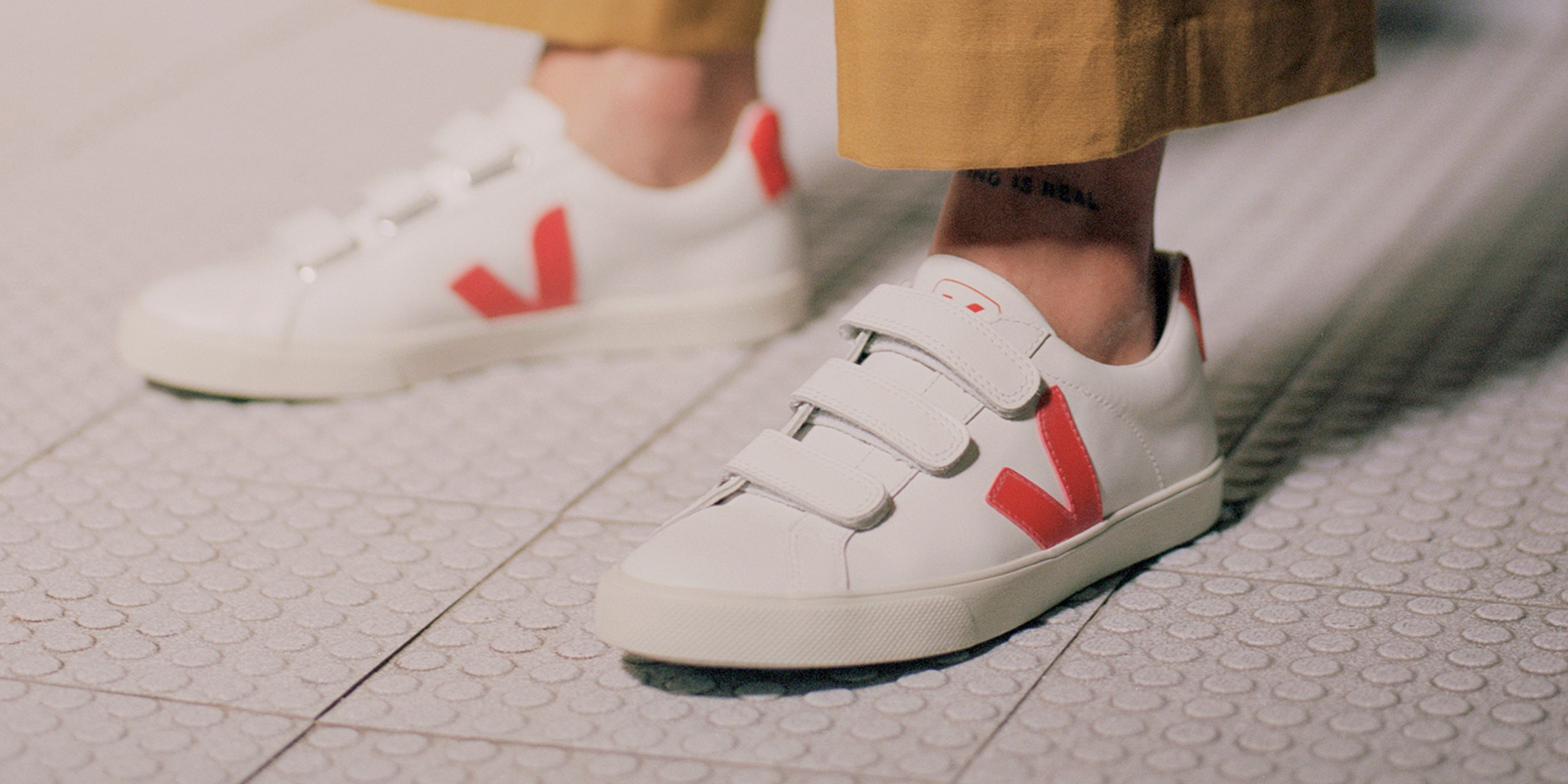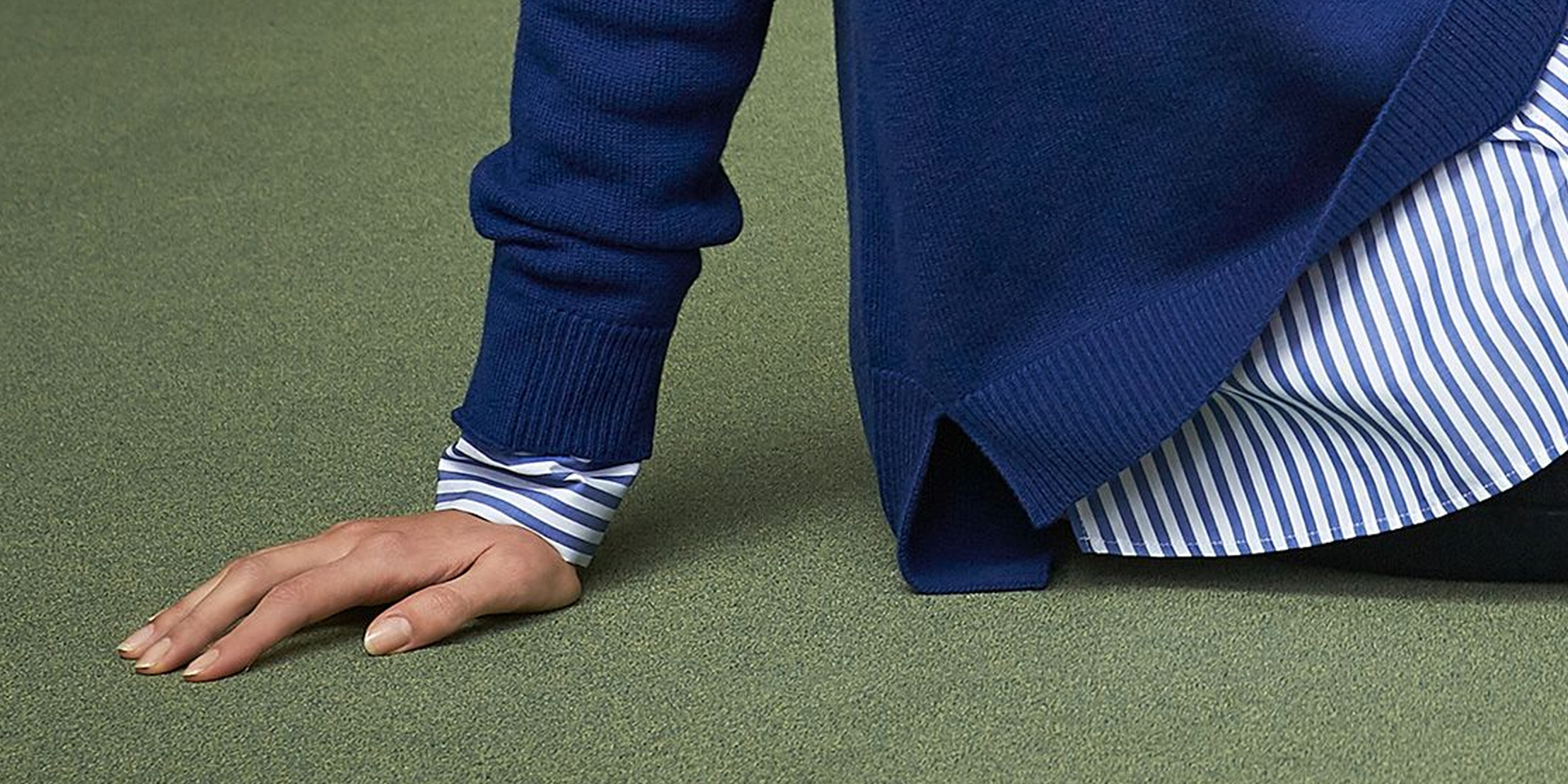Our editors curate highly rated brands that are first assessed by our rigorous ratings system. Buying through our links may earn us a commission—supporting the work we do. Learn more.
The majority of discarded clothes are destined for landfill—but it doesn’t have to be this way. Here’s how to recycle them properly.
The state of textile waste in 2025
It feels good to clean out your closet, doesn’t it? But discarded clothes are one of the largest sources of textile waste—and most of it goes for incineration or landfill—so it’s important to ensure you’re sending your unwanted clothes to the right place.
Donating the clothes you don’t wear any longer to charity, passing them on to friends, or recycling them is a key aspect of circular fashion, which involves keeping clothes in the usage cycle for longer rather than simply sending them to landfill or incineration after a few wears. That said, most of us around the the world can’t just put clothes and textiles straight into our kerbside recycling bins at home and expect them to be recycled into new garments, so here, we’re sharing some tips and organisations to help you sort and recycle your clothes in the right way.
But let’s zoom out for a second, because while this is a conversation about how to recycle your clothes, the bigger picture is that there are more garments and textiles on Earth than ever before. Overproduction and overconsumption are driving these unsustainable levels of clothing, as ultra fast fashion brands continue to manufacture and sell products at an astounding pace. That means that more of it is being thrown out, increasing pressures on waste systems—you need only look at the overwhelming levels of discarded textiles in the Atacama desert, or on beaches and riversides near Accra, to see the impact.
Second-hand clothing is now in oversupply, while the cost of collecting, sorting, and recycling it has only increased. In order to shift the current trajectory we’re on, the industry must make systemic changes, and we as conscious consumers must change our consumption habits by buying less, whilst focusing more on mending and recycling the things we already own. Read on to learn about the myths, realities, and practical tips for how to recycle unwanted clothes.
Myth: Clothes thrown in the trash get recycled
What happens to our clothes if we throw them away in the trash? Unlike many glass or recyclable plastic containers that are sorted, bailed, and re-used, clothes left in your kerbside bins simply end up in landfill—and even if you separate them into a home recycling bin, they’ll simply make it harder for local waste services to segregate other items.
Reality: Clothes thrown in the trash end up in landfill
Australians alone send around $500 million worth of fashion clothing to the tip each year and few local authorities have the mechanisms for sifting through it all, yet over 95% of it could be recycled and reused. That’s why it’s important to send your unwanted clothes to specialist textile recyclers, like the ones we’ve listed further down. Fabric composition, contamination, and hardware all determine whether an item of clothing can be recycled, too, which leads us to another misconception…
Myth: All clothes are recyclable
It’s easy to imagine that once your clothes reach a textile recycling centre, they’re transformed into fibres that can be used again to make another garment. But it’s not that simple.
Reality: Recycling depends on fabric composition and garment condition
The development of textile recycling technology is ongoing, and while it’s fairly straightforward to recycle textiles made purely from one fibre, like cotton, hemp, or linen, it’s another story for fabric blends.
Fibres are often blended to give a fabric certain characteristics—elastane might be mixed with cotton to make it stretchy, for instance. But when fibres are blended like this, recycling them is challenging because current technologies have limitations around the fibres they can handle. The same goes for garments with embellishments like beads and appliqué, and hardware such as zips or buttons—all these need to be removed in the pre-processing stage, and there are still logistical and technological challenges in doing so.
Similarly, a hole here and a stain there might not seem like a big deal, but when dirty or contaminated clothes reach sorting centres they can be considered unsafe or unusable, particularly if they are destined for second-hand markets. Be sure to check the condition of garments and launder them before you sell, donate or recycle them.
Practical tips for how to recycle unwanted clothes
Send your unwanted clothes to textile recycling specialists
BlockTexx is a clean technology company that recovers polyester and cellulose from textiles and clothing. The company’s mission is to divert textiles and clothing away from landfill and accelerate the global textile recycling industry towards a sustainable future.
Receive. Swap. Recycle. Clean out your closet for credit or swap out your old For Days items for higher discounts. For Days works in partnership with Trashie—a post-consumer recycling expert—to sort and grade every item that gets sent in. Then clothes are either donated for reuse or recycled depending on their fibre composition.
RCYCL is an Australian organisation that takes donations from consumers and partners with textile recycling specialists to send items to the right place. If donated garments are made from natural fibres, they’re respun into new yarns, while synthetic and blended fibres are transformed into carpet underlay.
Use brands’ recycling schemes
Subset is an underwear brand that has a recycling program for worn undies, which can rarely be sold or donated, so are often thrown in the trash. The brand has partnered with a local NYC non-profit to safely recycle your intimates and divert them from landfill. The underwear is sorted by fibre makeup, broken down and made into a new fibre, and eventually recycled and used for insulation and rug pads. So send your ready-to-retire intimates—no matter the brand—and Subset take care of them.
Australian label Spell also has a resale platform, but for garments that are truly worn out, the brand’s Salvage scheme will take care of everything. Customers simply ship their used Spell items to the brand, and in collaboration with textile recycling organisation Upparel, the garments are either repaired, donated, upcycled, or shredded and given a new life. Spell says its mission is to ensure nothing goes to landfill.
Looking to reduce your nylon waste? Swedish Stockings collects and grinds down old pantyhose and tights to make stylish new tables, as well as a filler material for fibreglass tanks, which are used in the commercial industry to separate grease from water. To participate in the process, simply collect and send in three or more pairs of synthetic pantyhose from any brand.
Underwear brand KENT has partnered with a regenerative organic farm in California on an innovative takeback scheme for its garment. Since everything in KENT’s underwear items is plant-based, they’re easy to compost (and can even be composted at home). Customers can send in their worn out undies in exchange for store credit.
Sell your gently used items
Selling clothes you no longer want and that are still in good condition is a great way to keep garments in use and put some money back in your pocket, too. Likewise, buying second-hand clothing instead of new items contributes to a more circular fashion industry. Our guide on how to sell used clothes is a must-read, and the likes of Vestiaire Collective and eBay are great places to start as a seller.
Many brands also have their own take-back schemes and marketplaces, where you can buy and sell pre-loved items from the label. The great thing about these schemes is that, in many cases, the brand itself looks over the used garments before they’re put up for sale again, so you can be confident in the condition and authenticity of the item. Check out our list of “Good” and “Great” brands that offer resale services and take-back schemes.
Consider composting
Yes, you can compost clothes, but it’s highly dependent on what they’re made of and the conditions they’re composted in.
Importantly, clothes put in the compost should be made entirely from plant-based materials such as linen or cotton—that includes the trims, like ribbed cuffs on a sweatshirt, and threads that’ve been used to sew the item together with, too. Unfortunately these elements are rarely detailed on the fabric composition label, nor are details about the dyes and chemicals that’ve been used on the fabric, which could be harmful.
The bottom line? Only compost your item if you can be sure that it’s completely plant-based and organic to avoid any unwanted chemicals leaching into the environment. Embellishments and hardware, like zips, must also be completely removed before composting. When composting clothes, you’ll also want to cut them up into smaller chunks to help them break down quicker. If your compost is closed, you can expect these natural fabrics to break down quicker than an open pile. And don’t forget to ensure you’ve got the right mix of waste in your compost, too.
Why circularity is key
Part of breaking fashion’s linear cycle of take-make-waste is reconsidering how—and what—we consume. So, while we can’t take back past purchases, we can change future ones. Thinking about how long each new purchase will live in your wardrobe, how you’ll take care of it, and what it’s made from is a great way to start shopping more consciously.
There’s no denying that buying quality clothes and with intention can often mean a larger upfront investment, but those items are also more likely to last longer. A 2024 study by Vestiaire Collective found that, in terms of cost-per-wear, pre-loved quality clothes are 33% cheaper in the long run than fast fashion items since people get so much more wear out of them. By mending clothes, investing in versatile styles or a capsule wardrobe, and wearing clothes longer, we actually save money and use fewer materials in the long run.




















